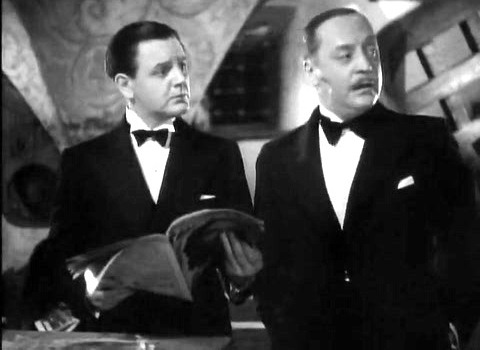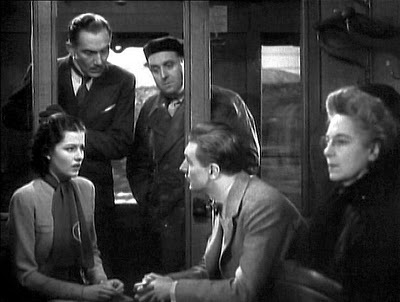This week and next I will be recommending two linked films made in Britain by different, tremendously talented directors. The first was made by the magnificent Alfred Hitchcock as the British phase of his career was winding down: 1938’s The Lady Vanishes.
For the first 25 minutes, the movie is a light-hearted romantic comedy featuring an utterly charming Margaret Lockwood and Michael Redgrave as, respectively, a wealthy American heiress bound for a loveless marriage with a penurious but titled aristo and a footloose music scholar manqué who clearly has some growing up to do. That they will fall in love is never in doubt, but murder and intrigue intrude as they make a train journey across the fictional central European country of Mandrika. An elderly, kindly, British-as-Sunday-roast governess named Miss Froy (Dame Mae Whitty, effortlessly fine) is at the center of events. After our heroine is coshed on the head by a falling flower pot, Miss Froy befriends her. But soon Miss Froy vanishes without trace and everyone denies that she ever existed! As in so many other films of this sort, the central character must struggle with whether her fears are real or are imagined (as everyone around her keeps saying).
As you might guess from the above description, the plot contrivances in this film are many, even by Hitchcockian standards. Most notably, if you watch the final few scenes carefully, you may wonder why the film wasn’t titled “The gun-toting bad guy vanishes”. But Hitchcock was aiming for a romp, not a piece of cinéma vérité, and a tremendously entertaining romp it is. Even some of the wonderful visual effects seem as much intended to invoke mirth as tension (e.g., the opening miniature shot). Screenwriters Frank Launder and Sidney Gilliat (who also scripted a similar RBC recommendation Green for Danger) produced a pearl of a script, with laugh out loud humor, cleverly constructed comic bits and suspenseful situations, cute late 1930s style sexual innuendo and some lovely character sketches.

The most famous of the latter are Caldicott and Charters. Naunton Wayne and Basil Radford were born to play the parts of the two cricket-obsessed, faintly barmy Englishmen abroad and they just about made a career of it from here on out, both in movies and television. Their timing is on the same level as Bob and Ray, but their sensibility is unmistakably English (not British mind you, English). It’s a testament to the actors and the writers that they were able to create characters that audiences could laugh at even though they were themselves being mocked to some extent (Decades later, The Simpsons would pull off the same trick on American television).
Hitchcock fans argue over whether this film or my previous recommendation The 39 Steps represents his best British work. I tend toward the latter by an eyelash, but why choose when both hold up so well three-quarters of a century after they were made? If you like one, you will like the other as the plot elements are similar and in both cases, the heroes have none of the darker shades that Hitchcock favored more as he aged (For example, consider the Ingrid Bergman and Cary Grant characters in Notorious). Lockwood and Redgrave are uncomplicated young people who are brave, smart, funny and in love.
The Lady Vanishes was such a success that the same writing team and a number of the actors were reunited to make another movie of the same sort, this time directed by Carol Reed. More on that movie next week.
The Lady Vanishes is in the public domain, and there is a a perfectly nice print from The Internet Archive you can watch here. The Criterion Collection version, available for purchase, looks even better and also includes some wonderful extras.

Yes, yes, yes!!!! I never get tired of this film. Dame May Whitty!!! Margaret Lockwood!!!!! Michael Redgrave!!!! Those two cricket-obsessed guys. How can you go wrong????
Should you have any doubt about just how good the performances were, and not just the great story, watch one of the remakes (there are at least two). Granted, Hitchcock wasn't directing either, but even though the remakes are not bad, the characters don't come alive with lesser actors.
The Lady Vanishes is a brilliant film, and the light tone simply sets up the portrait of Nazi brutality which follows. There is nothing better than the utter surprise of those who do not see that coming-that is, the characters in the film who think they are immune or protected. It is certainly kind of Hitch to give us the very ending too. He was nice that way. I'd put this one up there with Shadow of a Doubt, which has a lot of similarities (including a happy train moment at the very end).
Excellent observation, and it applies even more to the quasi-sequel Night Train to Munich, which I review next week.